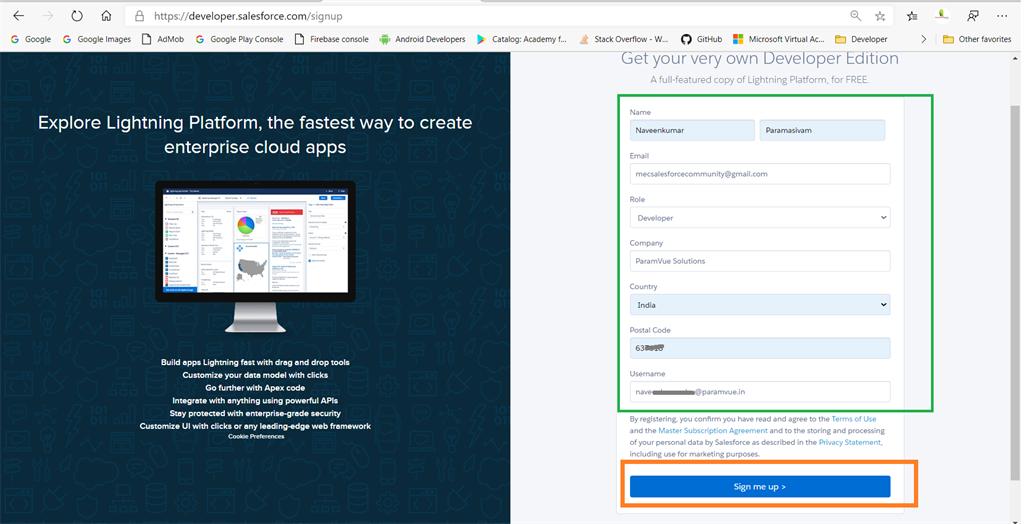Where traditional methods like EDI or utilizing manual processes to exchange data can be inefficient and error-prone, integrating Salesforce Commerce Cloud with your existing system using APIs is a much more reliable solution to get the most out of your eCommerce platform. In this article will mention the types, benefits, and detailed process of integrating Salesforce commerce cloud API.
- Salesforce Commerce Cloud offers a range of APIs to interact with their platform.
- The APIs provide access to various features such as product information, order and payment processing, customer accounts, a content management system (CMS), analytics, and more.
- The integration process is easy and can be done in a few simple steps.
If not properly implemented, using Salesforce Commerce Cloud APIs can cause unforeseen problems in your existing system that could result in significant financial losses.
The key to successful salesforce commerce cloud integration is selecting the right combination of APIs for your specific requirements and setting up a secure authentication process to keep your data safe.
With the right approach, you can take full advantage of the powerful features offered by Salesforce Commerce Cloud and streamline your business processes.
This article will discuss the key features of Salesforce Commerce Cloud Development APIs, explain why they are essential for businesses today, and provide simple steps to implement them properly.
We will also discuss the various benefits of using Salesforce Commerce Cloud Implementation and why they are essential for businesses looking to stay ahead of the competition.
What are the Different Types of Integrations with Salesforce Commerce Cloud APIs?
Salesforce Commerce Cloud APIs come in two main types:
Rest API
This type of API enables secure access to and manipulation of data stored in Salesforce.
It also allows businesses to customize their existing workflows and processes by connecting them to external applications or systems.
Businesses can even migrate their workflow reports using the Salesforce Commerce Cloud Migration feature.
Soap API
This type of API is used for integrating Salesforce with other enterprise applications and drives essential functions such as order fulfillment, inventory management, customer service, and more.
How to Implement Salesforce Commerce Cloud API
Implementing Salesforce Commerce Cloud APIs requires careful planning and preparation. Below we’ll mention how to implement different APIs in your system.
Connecting REST API to Salesforce
You can use OAuth 2.0 to connect your application to Salesforce and authenticate users. This involves setting up an authorization server where the user can log in, granting permission for the application to access them, and then allowing it to access its data via API calls. Below are the steps to do so.
Step 1: Sign Up for Salesforce Developer Edition
You’ll need to create a Developer Edition organization in order to access the Salesforce APIs. You can sign up for this at developer.salesforce.com/signup and follow the instructions for creating a Developer Edition organization.
If you already have access to a Developer Edition organization, you can skip this step.
Step 2: Set Up Authorization
A connected app must be set up in the Developer Edition organization to enable OAuth authentication.
To do this, go to Setup -> Create-> Apps and then click on the Connected Apps section.
Step 3: Connect REST API to Salesforce Using OAuth
Once the connected app has been set up, you can generate an access token for a user and then use that token to make API calls to Salesforce. The access token should be sent in the Authorization header of each request.
Use the following command to generate a Token:
curl -v https://login.salesforce.com/services/oauth2/token -d “grant_type=password” -d “client_id=3MVG9PhR6g6B7ps4xDycwGrI4PvjVZvK9” -d “client_secret=8870355475032095511” -d “[email protected]” -d “password=test1234mB1riuD3n”
Step 4: Make Requests to Salesforce
To request Salesforce, substitute values from your organization into these examples. For example, if you want to create an Account record, you would use the following cURL command:
curl -X GET https://instance_name/services/data/v53.0/chatter/users/me -H ‘Authorization: Bearer 00DD0000000FJ6T!AQkAQPde_DMF2vGzddfZmBRS95Goj DbtArKkgukAgZP0OVFYY5KkAqhLw9ejeKIlpJ3FgwGAWeRlBiWRt8mfXEuAZGbZNosk’
Once you have successfully connected REST API to Salesforce, you can make requests to endpoints in Salesforce to access and operate on different kinds of data, such as records, query results, and metadata.
Implementing SOAP API
The SOAP API is used for integrating Salesforce with other enterprise applications and drives essential functions such as order fulfillment, inventory management, customer service, and more. To implement a SOAP API, you first need to set up an endpoint and then create the necessary SOAP requests. Here’s how:
Read Also BigCommerce API Documentation
Step 1: Initiate Connection with Endpoint
To initiate a connection with Salesforce via the SOAP API, you’ll need to send a request to the endpoint. You can do this by sending an <Envelope> element containing a <Header> and a <Body> along with the appropriate URL.
Example:
<Envelope xmlns=”http://schemas.xmlsoap.org/soap/envelope/” xmlns:urn=”urn:partner.soap.sforce.com”>
<Header>
…
</Header>
<Body>
…
</Body>
</Envelope>
Step 2: Create SOAP Requests
Once you have established the connection, you will need to create the necessary requests to access or manipulate Salesforce data. The requests that can be sent include queries, inserts, updates, deletes, and more.
Step 3: Generate Authentication Token
You will also need to generate an authentication token which you can then include in the requests sent to Salesforce. This is done by using a secure access token and passing it along with each request.
By implementing SOAP API, you can easily integrate Salesforce with other enterprise applications and drive essential operations such as order fulfillment, inventory management, customer service, and more.
Once you have connected REST API to Salesforce and implemented SOAP API, your system should be ready for efficient data sharing between Salesforce and other applications. With these methods in place, you can now seamlessly access and manipulate Salesforce data in your organization.
What are the Benefits of Integrating Salesforce Commerce Cloud?
Implementing Salesforce Commerce Cloud APIs has many benefits that can help businesses become more efficient and improve customer satisfaction.
Increased Efficiency and Automation
Businesses can save time and reduce costs by automating various processes with Salesforce Commerce Cloud APIs.
This allows them to focus their resources on more profitable activities, such as developing new products and services.
Improved Customer Experience
Integrating existing systems with external applications can help businesses provide customers with a more personalized shopping experience. This can help businesses increase sales and loyalty.
Reduced Risk of Data Loss
Integrating Salesforce Commerce Cloud APIs into your existing system helps reduce the risk of data loss, as all changes and updates can be tracked in real-time.
It ensures that customers always have access to accurate and up-to-date information.
Streamlined Data Management
Leveraging ecommerce integration with salesforce allows businesses to manage and store customer data more efficiently.
Therefore, this allows them to access, analyze and use this data quickly and easily, helping them make better decisions in less time.
Optimized Business Processes
Salesforce Commerce Cloud APIs can automate various processes, such as payment processing and order management.
With the help of Salesforce Commerce Cloud Optimization, businesses can optimize their operations and reduce manual labor, resulting in increased efficiency.
Greater Revenue Potential
Integrating Salesforce Commerce Cloud APIs into your existing system can help businesses improve customer experience and operational efficiency, leading to better profitability.
Through optimized processes, improved customer experience, and increased efficiency, businesses can generate more revenue while minimizing costs. This paves the way for tremendous success in the long run.
With Salesforce Commerce Cloud APIs, businesses can reap the benefits of improved customer experience, increased efficiency, and streamlined data management.
This allows them to focus on what matters most – growing their business, creating new products and services, and increasing revenue.
With the right integration partner, businesses can quickly implement Salesforce Commerce Cloud APIs and unlock their true potential.
Tips & Best Practices for a Successful API Integration
When integrating Salesforce Commerce Cloud APIs into your existing system, it’s essential to keep the following tips and best practices in mind:
Set Clear Goals
Before beginning the API integration process, you should set clear goals that outline what you want to achieve with this integration.
This will help you focus on the right areas and make decisions that align with your business objectives.
Choose the Right APIs
Most businesses have different needs and requirements, so it’s essential to choose the right APIs to meet them.
Select APIs compatible with the existing system that can help you improve customer experience and operational efficiency.
Test & Monitor Regularly
Once you have integrated your Salesforce Commerce Cloud APIs into your existing system, testing and monitoring them regularly is essential.
By utilizing this, you can quickly identify any issues or errors affecting customer experience, allowing you to address them promptly and ensure a seamless experience.
Work with a Professional Partner
Integrating Salesforce Commerce Cloud APIs into your existing system can be complex and time-consuming.
To ensure the process goes smoothly, it’s best to consult a professional partner who has experience with this type of integration.
They can provide valuable advice and support throughout the entire process.
Conclusion
In conclusion, integrating Salesforce Commerce Cloud APIs into your existing system can provide numerous benefits for businesses, such as improved customer experience and increased operational efficiency.
Businesses can ensure successful integration with a Salesforce Commerce Cloud Consultant by setting clear goals, choosing the right APIs, and regularly testing and monitoring.
Additionally, working with a professional partner can guide the entire process.
With the right approach and tools, businesses can leverage the power of Salesforce Commerce Cloud APIs and improve their customer experience. If you have any other queries, you can connect to Salesforce Commerce Cloud Support Services today!






